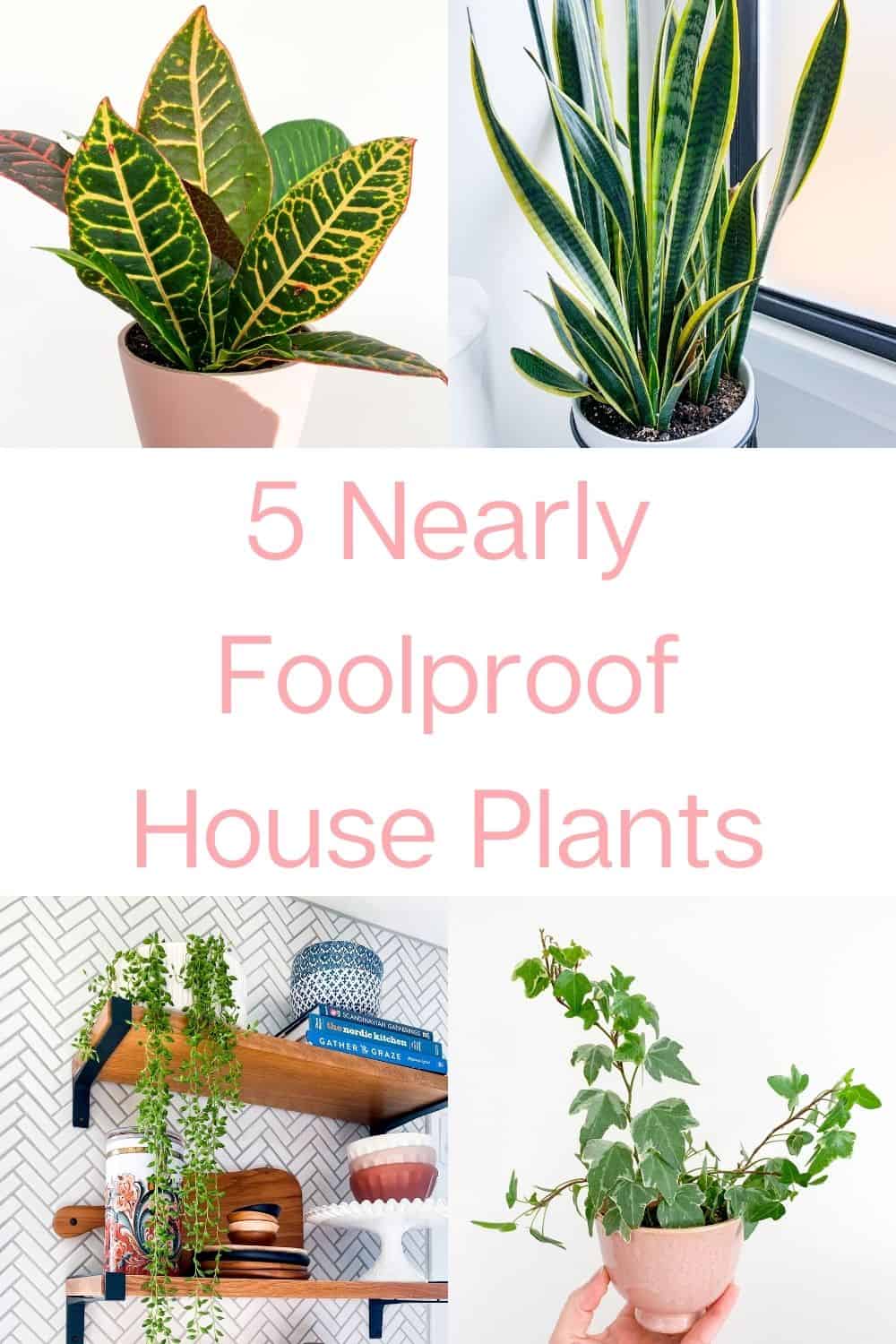These 5 houseplants are extremely easy to care for and are the perfect way to add character, warmth, and design to any home or space!
When it comes to houseplants, I know many people become overwhelmed and often get intimidated. While they’re all beautiful, they can be quite confusing. For example, one plant may need ample amounts of sunlight. Meanwhile, another might need very little sunlight. Some need lots of water, others need very little water, and others still require an amount somewhere in between. With so many rules, how are you ever supposed to keep them all straight, and what counts as an ample amount of sunlight anyway?! Trust me. I get it.
However, caring for your plants is really pretty simple once you get the hang of it. In my opinion, keeping your plants alive, healthy, and thriving comes down to just three main care practices. They include watering, light, and drainage. Everything else is just extra.
Tips to Choose the Perfect Houseplant:
- Identify where you want to put it.
- Identify how much light it will have.
- Identify if it will have room to grow.
- How much care are you capable of giving (yes, almost like a pet).
- Do pets or children have access to these areas? Some plants can be toxic!
- Do I have planters that allow for proper drainage? I recommend a planter with a drainage hole and a saucer to avoid any damage to flooring or surfaces.
- Why do I want a plant – décor, air purification, to bring the outside in. This helps when choosing the right plant for you in terms of the look of the plant.
Luckily, there are certain plants that are easier than others. For beginners, I recommend investing in a string of pearls succulent, a golden pothos, a snake plant, a garden croton, or an English Ivy. Keep reading to learn more about each plant. Benefits, drawbacks, and more, I’m covering it all to set you up for success in your plant growing endeavors!
String of Pearls Succulent
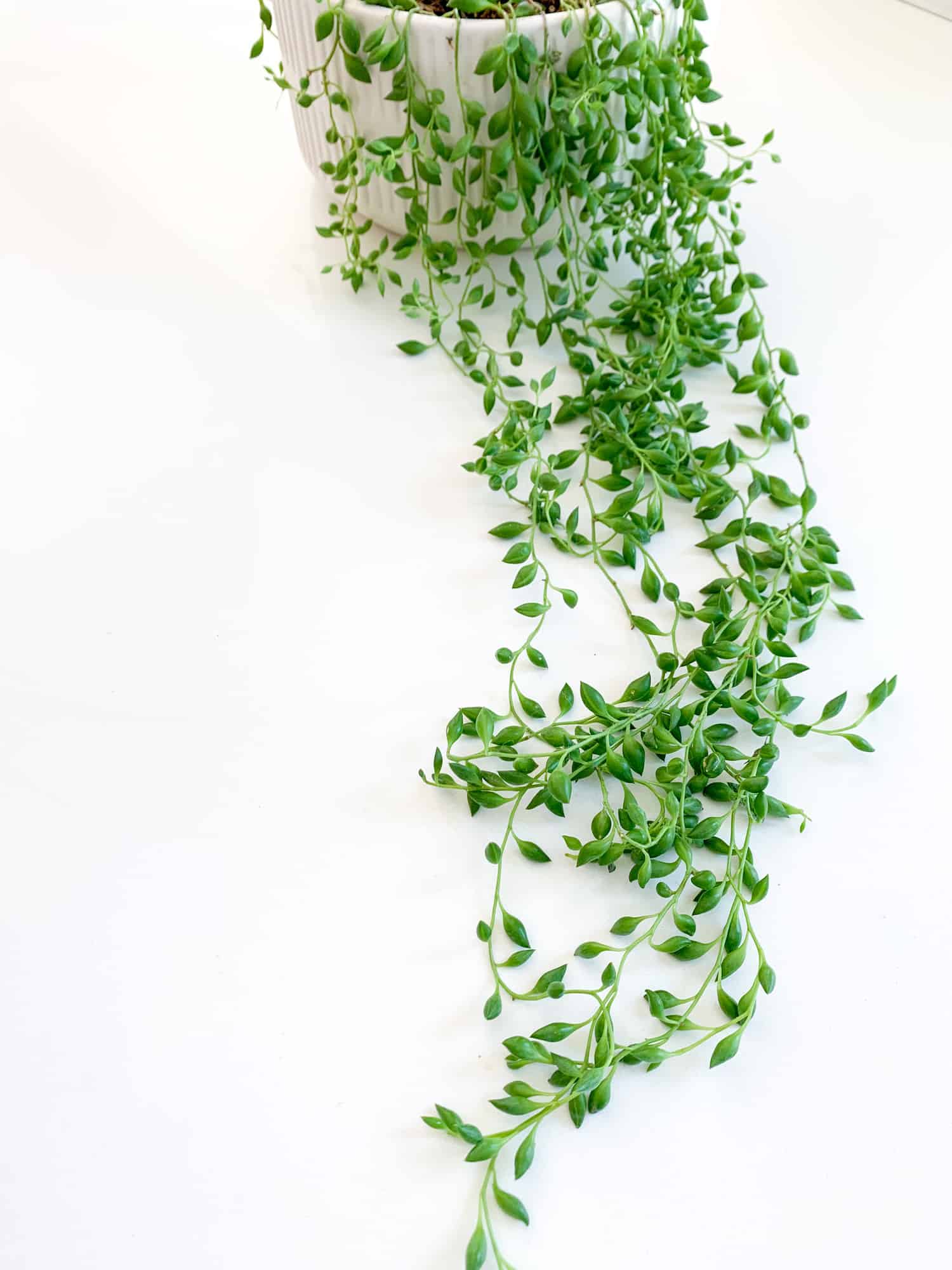
Also known as String of Beads or Rosary Vine, the String of Pearls Succulent is a vine that looks like small bubbles or pearls. It has long, cascading tendrils making it an amazing décor or statement plant for any open spaces. Personally, I love to set these plants up high and let their tendrils spiral down. It’s a great way to fill up any open wall space you’re not sure how to decorate. Even better, String of Pearls Succulents are extremely easy to care for, making them excellent options if you’re known to have a brown thumb.
The Best Environment for String of Pearls Succulent Plants:
These plants are suitable for nearly every environment. They thrive in partial sunlight or partial shade. I keep mine on open shelving located in my kitchen where it receives indirect sunlight all day.
Tips for Caring for String of Pearls Plants:
To provide the best care for these plants, allow the soil to dry between watering. This time period will be longer during the winter months – Don’t worry! You aren’t doing anything wrong. After each watering, you want to make sure the plant fully drains.
Golden Pothos Plants
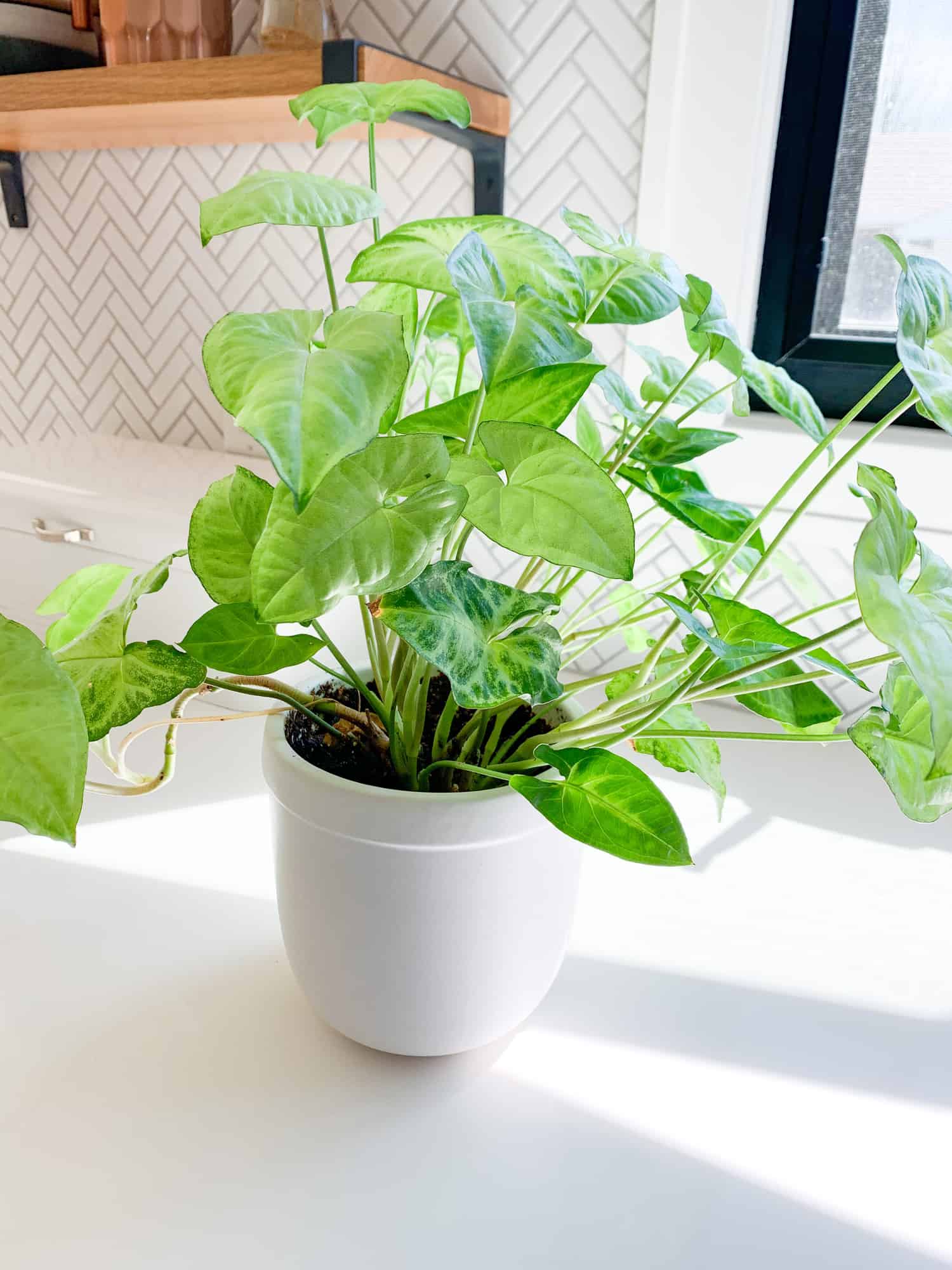
Commonly known as Devil’s Ivy or Taro Vine, the Golden Pothos is one of the most popular houseplants available. Its popularity is due to the fact that this plant is pretty much impossible to kill and can be easily propagated. In addition, not only are these plants beautiful, they serve as natural air purifiers!
The Best Environment for Golden Pothos Plants:
If you live in a super sunny environment, the Golden Pothos may not be the plant for you. These plants require a certain amount of shade to thrive. In fact, direct light can burn their leaves. This being said, Golden Pothos are best kept in partially sunny or partially shady locations.
Be warned, though! Golden Pothos can be toxic to dogs and cats. Be sure to take this into consideration when choosing their home and evaluate how “hands-on” your pets might be with your plants. As a result, I recommend keeping these plants in higher locations out of harm’s way. I have mine hanging in the powder room bath with half-day direct light and half-day indirect sunlight.
Tips for Caring for Golden Pothos Plants:
If you live in a super sunny environment, the Golden Pothos may not be the plant for you. These plants require a certain amount of shade to thrive. In fact, direct light can burn their leaves. This being said, Golden Pothos are best kept in partially sunny or partially shady locations. Their watering needs are average at about once per week (less in winter). When the top 1 inch or so of soil becomes dry, this is a good sign it’s time to water your plant. Again, be sure to fully drain after each watering.
Snake Plant
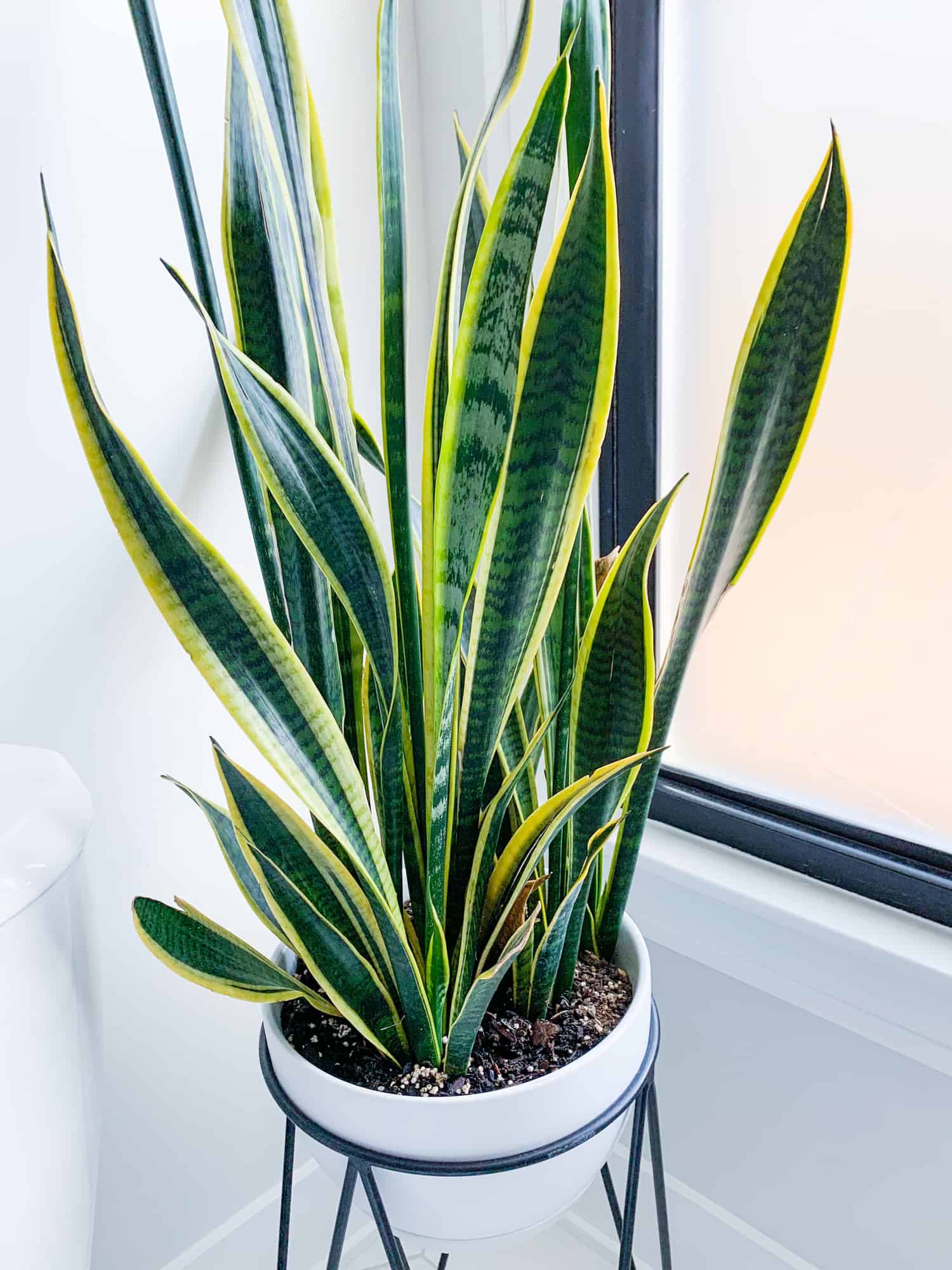
Also known as Mother in Law’s Tongue or Saint George’s Sword, the Snake Plant is similar to the Golden Pothos in that it serves as a natural air purifier. The plant works to absorb toxins into its leaves and produces pure oxygen in return. Yes, seriously!
The Best Environment for Snake Plants:
Unlike some other plant varieties, the Snake Plant does best in full sun or partially shady environments. When choosing a location, think on a windowsill with direct exposure to sunlight or somewhere similar. I have mine in the main bathroom, next to the window where it receives both direct and indirect sunlight throughout the day. However, if you initially place your plant in a shady spot and want to relocate it to a sunnier locale, be sure to do so gradually. Otherwise, you may burn the leaves!
Tips for Caring for Snake Plants:
These plants are low maintenance and need to be watered roughly once a week (less in the winter). When the soil has almost entirely dried out, you should replenish the plant’s water and fully drain it after each watering.
Garden Croton Plants
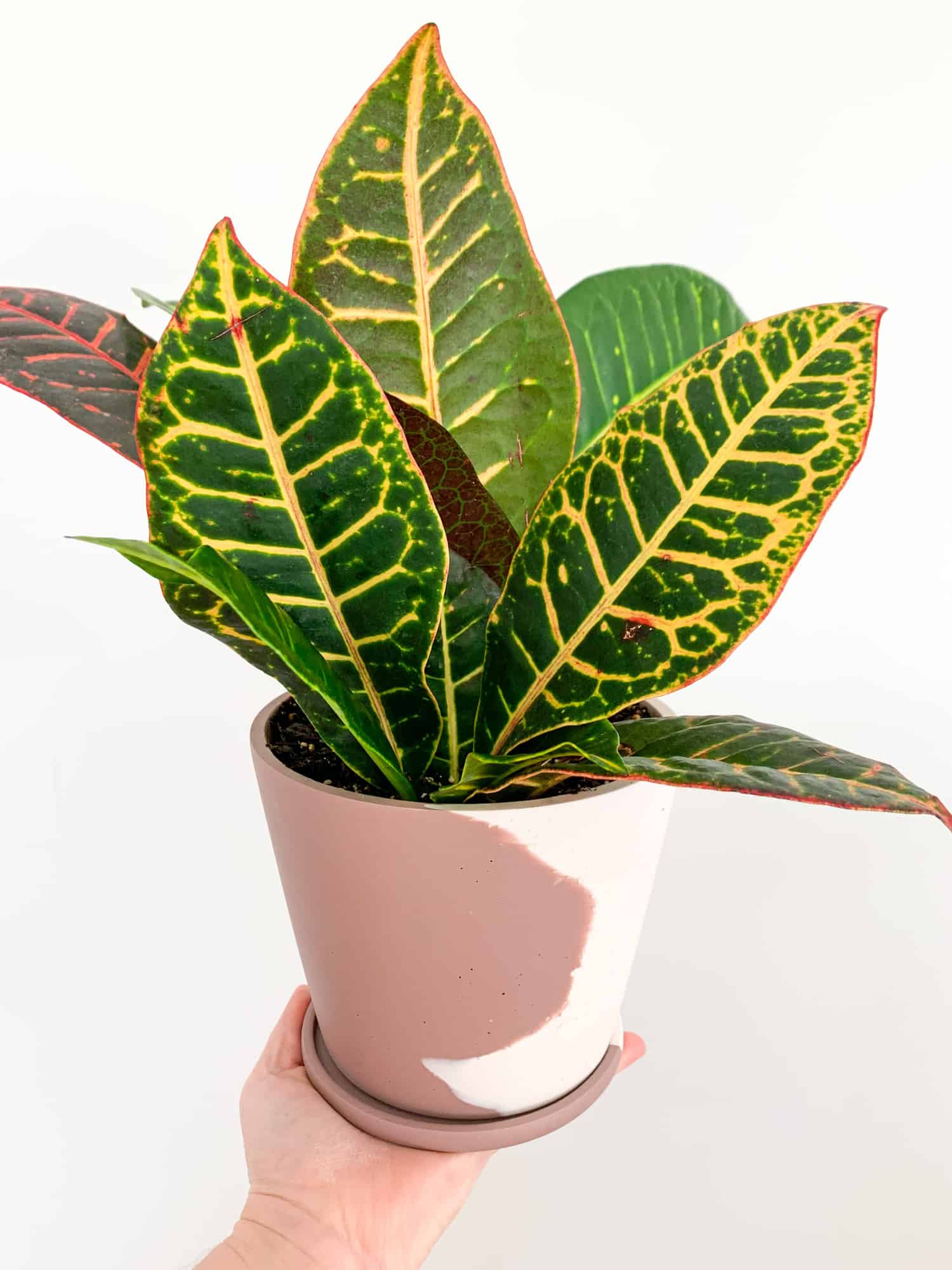
Also known as Variegated Crotons, the Garden Croton is a cute, colorful, little plant. They’re the perfect way to spruce up windowsills, coffee tables, desks, and more!
The Best Environment for Garden Croton Plants:
Thes Garden Croton is a little more finicky than other houseplants, but not by much! These plants prefer bright but indirect sunlight. Actually, how much light this plant receives directly influences its colors. As a result, placing them next to windows yields the best results. Basically, the more light, the more vibrant the colors. Personally, I keep mine next to the kitchen sink, in front of the window with all-day direct light. However, be careful when choosing your plant’s home. Temperature extremes such as those experienced next to windows or vents may cause the plant’s leaves to fall off!
Tips for Caring for Garden Croton Plants:
Garden Crotons should be watered when the top 1 ½ inches of soil are dry. Again, be sure to fully drain the plant with each watering. You want to keep this plant’s soil moist but never soaking.
English Ivy Plants

Also known as Common Ivy or Poet’s Ivy, these spunky little plants are perfect for nearly any decor. You won’t believe how easy they are to care for.
The Best Environment for English Ivy Plants:
These plants aren’t picky and do well in environments where they receive anything from partial shade to full sun. I have mine on the kitchen counter where it receives indirect sunlight all day. However, these plants can be toxic to both pets and people! Therefore, please take extra precautions when deciding where to place them.
Tips for Caring for English Ivy Plants:
On average, English Ivy plants need to be watered once a week. You’ll know it’s time to water when the top 1 ½ inch of soil is dry. Check your plant weekly and fully drain it after each watering for the best results.
4 Must-Have Plant Care Items
- Water meter: This meter makes knowing when it’s time to water a breeze! Whether you are a newbie plant parent or have an expert green thumb, this meter will come in quite handy.
- Scissors: From trimming a lovely grocery store bouquet to pruning your growing plants, these scissors are the best!
- Watering Can: Not only is this lovely, with its sturdy handle and long spout, it’s extremely practical as well.
- Small Planter: This is the perfect planter for your little plant babies. It looks great on counters and shelves.
So, there ya have it! The top 5 houseplants you might actually have to try to kill. Of course, if you implement any of these into your household, I’d love to see it! If you don’t already follow me on Instagram, I’d love to have you join the family. Be sure to tag me in your posts and stories so I can see how you style and care for your plants! Also! Do you want more plant tips? Let me know below!
In the meantime, happy planting!
Karin
